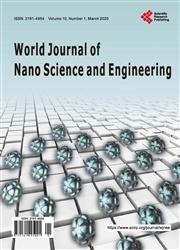Interface Recombination & Emission Applied to Explain Photosynthetic Mechanisms for (e-, h+) Charges' Separation
引用次数: 8
Abstract
To copy natural photosynthesis process we need to understand and explain the physics underneath its first step mechanism, which is “how to separate electrical charges under attraction”. But this Nature’s nanotechnological creation is not yet available to the scientific community. We present a new interpretation for the artificial and natural photosynthetic mechanism, concerning the electrical charges separation and the spent energy to promote the process. Interface (e–, h+) recombination and emission is applied to explain the photosynthetic mechanisms. This interpretation is based on energy bands relative position, the staggered one, which under illumination promotes (e–, h+) charges separation through the action of an interface electric field and energy consumption at the interface of both A/B generic materials. Energy band bending is responsible by the interface electric field (and the driving force) for the charges separation. This electric field can be as high or above that for p-n semiconductor junctions (104 - 105 V/cm). This physical effect is not considered by most of the researches. Without an electric field and without spending energy to separate electrical charges, any other existing model violates physical laws. The staggered energy band type is the only energetic configuration that permits charges separation under illumination and energy loss to perform the process. Application to natural photosynthesis and artificial photovoltaic material and their energetic configurations are discussed. Examples for A/B being III-V/III-V, TiO2/materials and II-VI/II-VI staggered energy band gap pairs are presented. In the proposed quantum mechanism, plants are able to eliminate most of the 79% of the absorbed visible light, according to the published reflection and transmission data. Moreover, the proposed mechanism can be applied to explain green fluorescent protein - GFP, charge transfer states - CTS and Fluorescent Resonance Energy Transfer - FRET. As recent literature experimental results propose photosynthesis as a quantum controlled mechanism, our proposition goes forward this direction.应用界面重组和发射解释(e-, h+)电荷分离的光合机制
为了复制自然光合作用过程,我们需要理解和解释其第一步机制下的物理原理,即“如何在吸引力下分离电荷”。但是这个自然的纳米技术创造还没有提供给科学界。本文从电荷分离和促进这一过程所消耗的能量两方面对人工光合作用和自然光合作用机制提出了新的解释。应用界面(e -, h+)重组和发射来解释光合作用机制。这种解释是基于能带的相对位置,交错带,在照明下,通过界面电场的作用和A/B通用材料界面处的能量消耗促进(e -, h+)电荷分离。能带弯曲是由界面电场(和驱动力)引起的电荷分离。该电场可以与p-n半导体结(104 - 105v /cm)一样高或更高。大多数研究都没有考虑到这种物理效应。没有电场,没有消耗能量来分离电荷,任何现有的模型都违反了物理定律。交错能带类型是唯一的能态配置,允许在照明和能量损失下电荷分离来执行这一过程。讨论了它们在自然光合作用和人工光伏材料中的应用及其能态。给出了A/B为III-V/III-V、TiO2/材料和II-VI/II-VI交错能带隙对的例子。根据已发表的反射和传输数据,在提出的量子机制中,植物能够消除吸收的79%的可见光中的大部分。此外,该机制还可用于解释绿色荧光蛋白(GFP)、电荷转移态(CTS)和荧光共振能量转移态(FRET)。由于最近的文献实验结果表明光合作用是一种量子控制机制,我们的提议朝这个方向发展。
本文章由计算机程序翻译,如有差异,请以英文原文为准。
求助全文
约1分钟内获得全文
求助全文

 求助内容:
求助内容: 应助结果提醒方式:
应助结果提醒方式:


